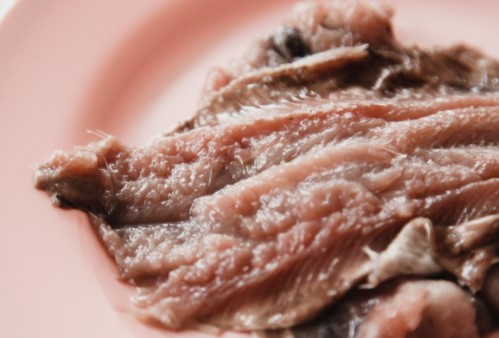Introduction to Mucanda: Fermented Fish Delicacy
Mucanda is a popular delicacy in Angola, made from fermented fish. It is a traditional dish that has been enjoyed by the people of Angola for centuries. Mucanda is known for its strong, pungent aroma and flavor, which comes from the fermentation process. The dish is usually served as a side dish, and it is often paired with other traditional Angolan dishes like funje or rice.
Mucanda is made from different types of fish, including mackerel, tilapia, and catfish. The fish is cleaned, gutted, and cut into small pieces before being salted and left to ferment for a few days. The fermentation process gives the fish a distinct sour and tangy flavor that is highly sought after by Angolans. Mucanda is usually sold in markets and street stalls across Angola, and it is a staple in many households.
The Preparation Process of Mucanda Fish
The preparation process for mucanda is straightforward, but it requires some patience and attention to detail. First, the fish is cleaned thoroughly and gutted. It is then cut into small pieces and salted liberally. The fish is then placed in a container and left to ferment for several days. The fermentation process can take anywhere from three to seven days, depending on the weather and the type of fish being used.
During the fermentation process, the fish is covered with a cloth to prevent any flies or insects from contaminating it. The fish is also stirred regularly to ensure even fermentation. Once the fish has fermented, it is washed thoroughly with water to remove any excess salt and then left to dry in the sun. The dried fish can then be stored for several months without spoiling.
Health Benefits and Culinary Uses of Mucanda
Mucanda is not only a tasty delicacy but also has numerous health benefits. Fermented fish is a good source of protein, omega-3 fatty acids, and vitamins. It is also low in fat and calories, making it a healthy addition to any meal. The fermentation process also increases the bioavailability of nutrients in the fish, making it more digestible and nutrient-dense.
In Angolan cuisine, mucanda is a versatile ingredient that is used in a variety of dishes. It can be added to stews and soups for a rich, savory flavor, or it can be fried and served as a snack or side dish. Mucanda can also be used to add flavor and depth to rice dishes or mixed with vegetables for a healthy and delicious meal. Overall, mucanda is a unique and flavorful delicacy that is worth trying for anyone interested in exploring new and exciting foods.

